- Best STIHL Brush Cutter Replacement Blade - December 8, 2023
- Box Elder Wood Uses - September 30, 2022
- Hackberry Wood Uses - September 25, 2022
There was a box in the corner of the classroom filled with blanks for turning or carving, and I should have known by the look on the instructor’s face that I had chosen a challenging wood.
In short, the persimmon wood uses are described as suitable for carving, and it does allow for fine detail and finish. However, in my experience, the hardness of the wood is somewhat played down in the description of the characteristics. Persimmon was a too adventurous step back then for my amateur hands. My kind instructor took a look at my carving attempts and gently suggested I turn the piece into a mallet head.
Some twenty-five years on, I use that same mallet head almost daily. Persimmon is an excellent type of wood for percussion activities. Superbly strong and dense with great shock-absorbing qualities.
The name Diospyros virginiana, if you are fluent in Latin, indicates that Persimmons is a member of the Ebony genus, which may alert you to just how hard the wood is. Not only is the wood hard, but it is also dense and elastic, making it the perfect material for golf club heads.
Persimmon wood is hard. Golf club driver heads were traditionally made with Persimmon timber, and they are almost works of art. Skilfully shaped with a silken finish and protected by layers of protective coatings, they appeal to the golfing traditionalist. There are still companies that make persimmon drivers and putters for the purists.
Persimmon wood is genuinely a lovely wood to carve. Fine details are possible, and the finish is beautiful. Sharp tools for carving and turning are essential, and your patience will be rewarded with a superior finish.
Bottom Line Up Front
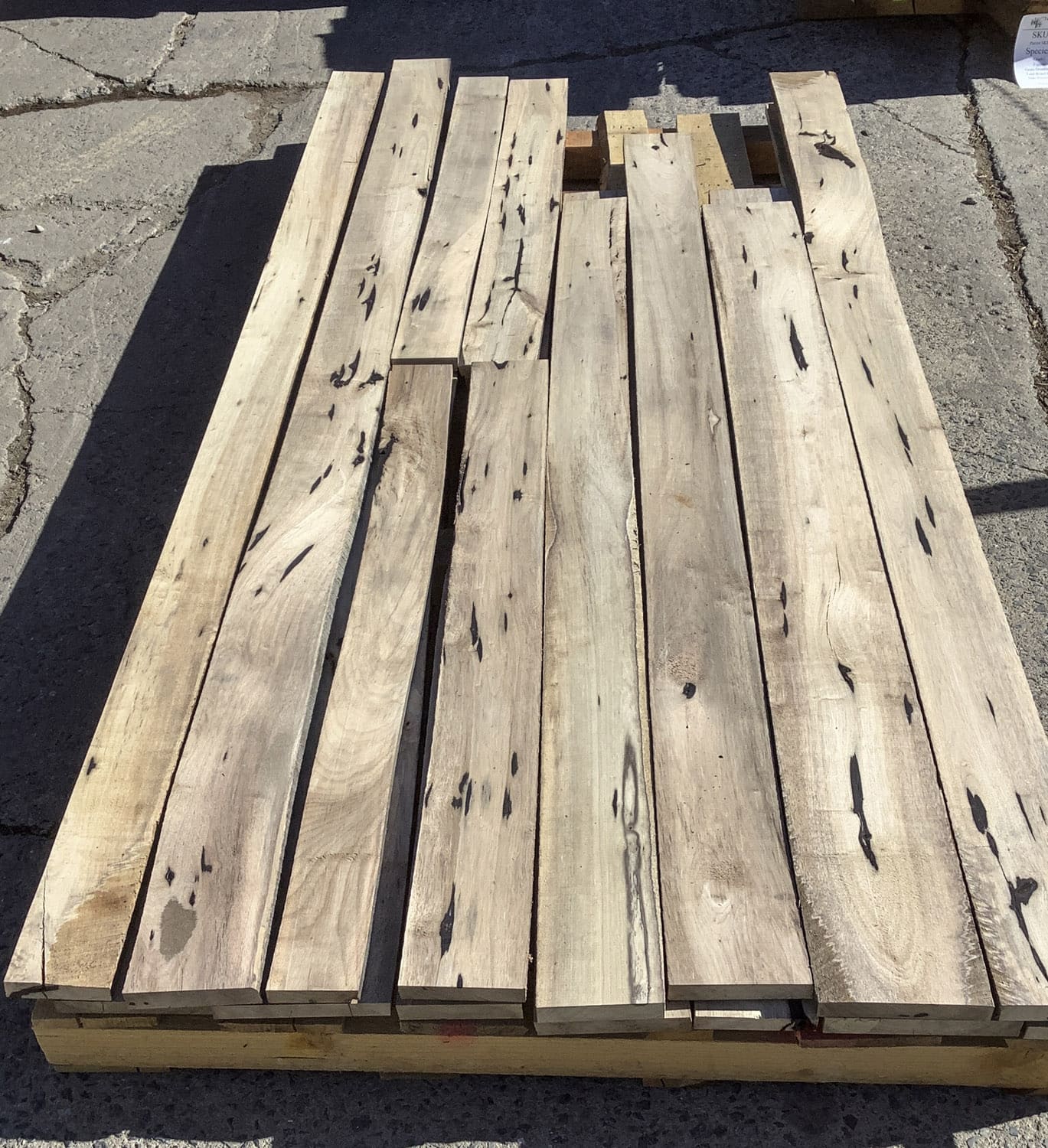
Persimmon wood should be your choice if you are looking for a wood that combines hardness and elasticity. These two qualities have made it the choice for traditional golf club driver heads. In addition, it is an excellent wood for the lathe to turn articles like bowls, candle sticks, drum sticks, billiard cues, and jewelry.
Skilled Japanese wood carvers seek Persimmon wood to showcase their talents in carving fine and delicate art pieces.
Be prepared, though; working with Persimmon wood demands super sharp tools. This wood is hard but difficult to season and has limited use in furniture pieces. In addition, it suffers from stability issues and is prone to shrinking and swelling in response to changes in the ambient humidity. This makes it not such a good choice for furniture pieces.
As the sapwood is prone to insect infestation, Persimmon is not the correct wood for exterior projects.
So, What Makes Persimmon Wood so Unique?
Firstly, the sap and the heartwood don’t follow the standard pattern where the heartwood is the dominant feature of the two. With Persimmon, the sapwood is very wide, and the heartwood is miserably thin. Usually less than an inch wide.
Sadly, this causes the wood to be susceptible to insect infestation, and in particular, flatheaded borers are easily able to munch their way through the trunks of Persimmon Trees.
The grain of the sapwood is straight and uniform with a medium texture that can be worked to a super fine finish. The color changes from a freshly cut creamy white to a more greyish brown as the wood seasons.
Key Features of Persimmon Lumber
Hardness
The Janka Hardness rating for Persimmons is 2,300 (lbf). To offer some comparative figures, White Oak has a Janka value of 1,360 (lbf), and Ironwood is a little harder at 2,890 (lbf). Combined with the hardness of the wood, Persimmon also has excellent elasticity, making it a great choice for pool and billiard cues and the material of choice for golf club heads.
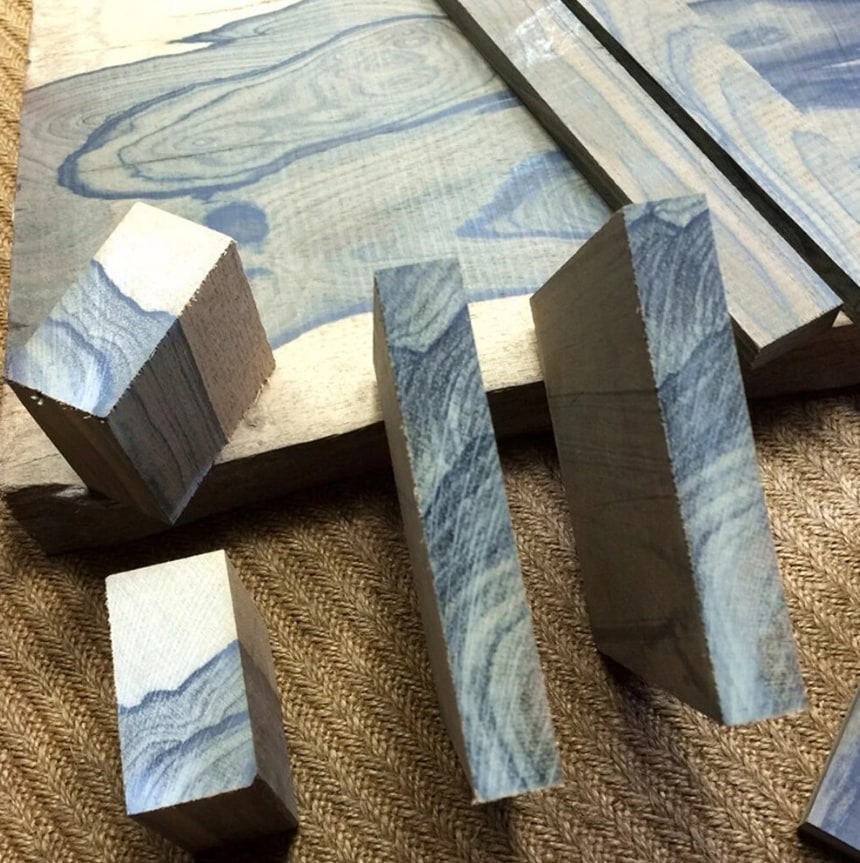
Density
Persimmon timber is one of the densest North American wood species. Only Hickory and live oak have heavier ratings. Remember that Persimmon is a member of the Ebony family, and Ebony wood sinks in water. Persimmon has a density of 50 pounds per cubic foot when dry.
Stability
Sadly, in the stability stakes, Persimmons has a poor rating. It is advisable to store Persimmons in a shed for six months before drying it in a kiln because it is so prone to surface checking, particularly in the heartwood.
Persimmon timber is also prone to warping and shrinking along with drying problems. The wood has a nine percent shrinkage from green lumber to six percent moisture content. This is significantly more than other hardwoods that range from six to seven percent shrinkage.
Strength
Persimmon is only second to Hickory in strength, stiffness, and hardness characteristics. Coupled with these impressive characteristics, Persimmon also has an enviable elasticity that renders it almost unbeatable in terms of resilience and hardwearing.
Working with Persimmon Lumber
Persimmon timber produces a superb finish, but to get there, the tools must be razor sharp, and the conditions must be ideal. In addition, the high density of the timber makes gluing problematic, and special attention needs to be given to the moisture content of the wood.
The time lapse between machining surfaces and gluing should be kept to an absolute minimum to ensure correct adhesion.
Care also needs to be taken when screwing Persimmon, and pilot holes are a prerequisite to avoid the wood cracking.
Persimmon Wood Uses
Golf Club Heads
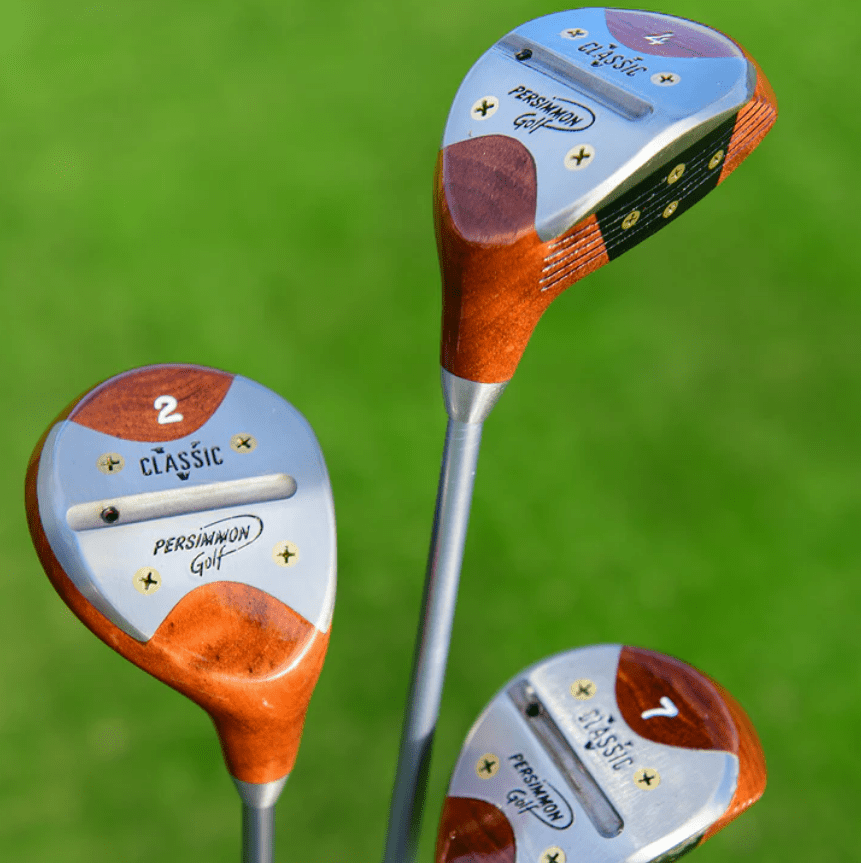
Chances are that most of the old golf club drivers on display in Golf Club Cabinets have heads made from Persimmon wood. The elasticity and hardness make it the ideal material to cope with a golf club’s rough and tough lifestyle.
Sophisticated machinery is required to satisfy the delicate requirements of golf club design, so for the average woodworking enthusiast, it’s not a recommended project.
Musical Instruments
Besides being the wood of choice for golf club heads, Persimmon has a range of other uses. It is highly prized for guitar fingerboards as well as drumsticks.
It turns very well and produces a lovely smooth finish, provided the turning chisels are sharp. Carving with Persimmon can also offer excellent detail and a fine finish.
Turning drumsticks is a great way to highlight the qualities of Persimmons wood. It is durable and has just the required amount of elasticity to prevent shock. In addition, the ability of the wood to produce a super fine finish makes it an attractive wood to use for billiard and pool cues.
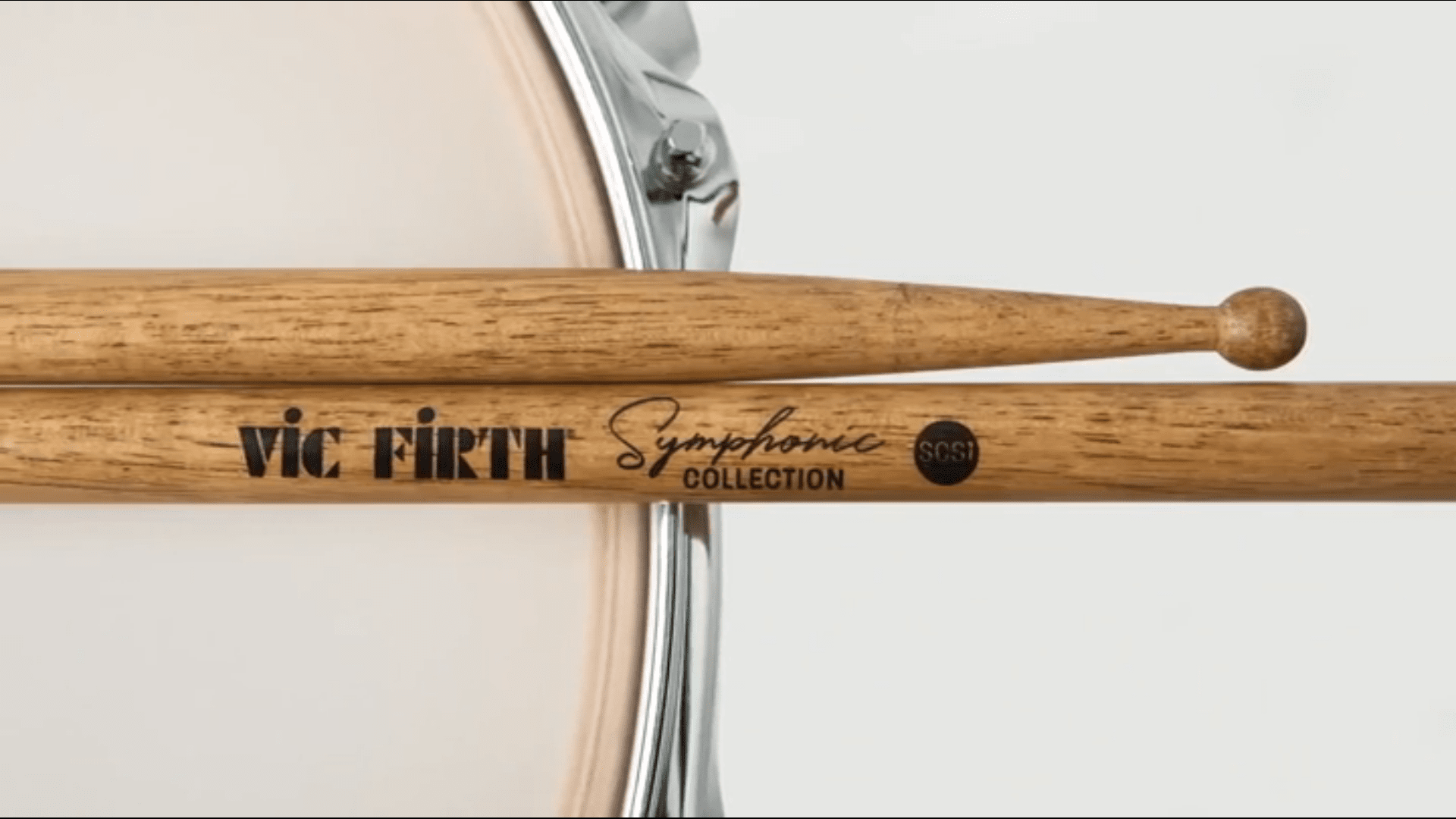
Weaving Shuttles
Traditionally Persimmon wood and Boxwood were used to manufacture weaving shuttles. Persimmon wood was preferred, and the hardness of the timber made the shuttles last a considerable time. Shuttles made from Persimmon timber are still available today, and while modern synthetic shuttles are available, there is a traditional attractiveness to the Persimmon shuttle.
Furniture and Flooring
The density and hardness of the timber would suggest that it would be ideal for Flooring, but the shrinkage problem severely limits the application of this timber to Flooring.
Persimmon wood is difficult to season correctly as it tends to warp and crack. The density of the wood also results in a lengthy seasoning time as it requires a couple of months to settle down before being dried in a Kiln.

For this reason, it is not an ideal wood for furniture as it tends to shrink or swell depending on the ambient humidity.
The scarcity of boards of significant size also limits the appropriate usage of Persimmon for general furniture. However, fine examples have been made of feature walls and smaller live edge slabs. Additional care is required because the sapwood is prone to insect infestation.
Persimmon as a Firewood
Persimmon is rated as an excellent firewood. It produces a considerable amount of heat with few sparks, and because of its high density, it makes beautiful coals. It has a BTU rating of 25,8, which aligns with woods like Hickory and Tanoak very near the top of the heat range.
The wood needs to be split and seasoned for up to two years before it is ready for the fireplace.
The wood is also highly rated as a wood used for smoking meats and fish. The woodchips induce a subtle sweetness to all types of meat, including game birds.
I must confess that I have a strong reluctance to use Persimmon lumber as firewood. Sure there will be pieces that have no value for woodwork, but generally, pieces of Persimmon cry out for artistic expression.
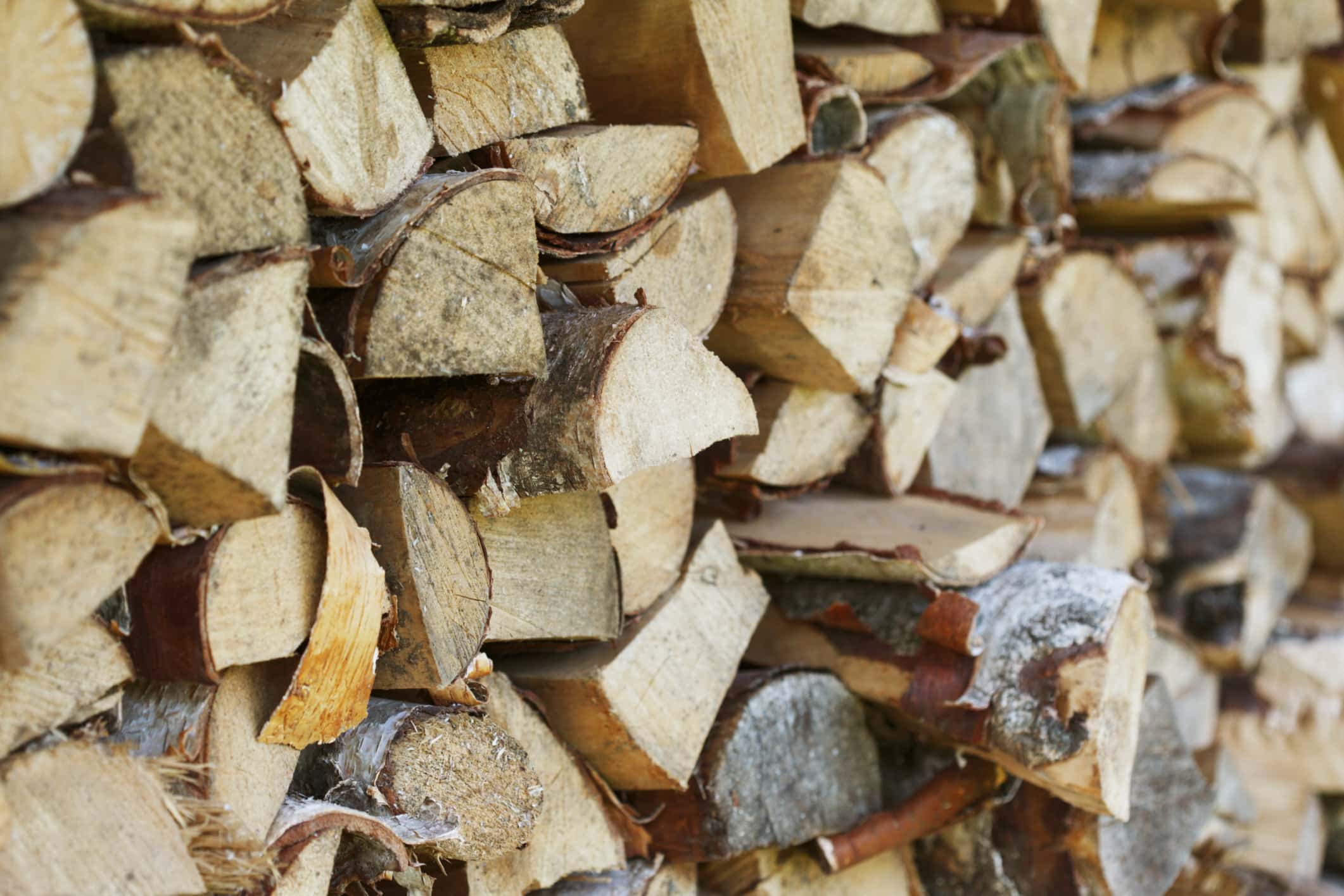
Alternatives to Persimmon Lumber
As the Latin name indicates, Persimmon (Diospyros virginiana) is part of the Ebony family. Macassar (Diospyros celebica), called Macassar Ebony, has similar characteristics.
Macassar is on the IUCN Red list because of the significant reduction in its natural habitat and because of its slow growth rate. Unlike Persimmon, the heartwood is dramatic and wide, contrasting with the pale gold sapwood. In addition, it is significantly harder than Persimmon, with a Janka Hardness of 3,220 (lbf).
It is also used for musical instruments, billiard cues, and turning. The heartwood is rated as very durable, but the sapwood has a low resistance to insect infestation.
Other alternative Ebony species are Indian Ebony (Diospyros ebenum) and Gaboon Ebony (Diospyros crassiflora), which are both endangered, while Mun Ebony (Diospyros mun) is critically endangered.
I suggest you stay clear of these species and instead try Ipe as an alternative. A little harder than Macassar at 3,510 (lbf), the heartwood has a dark brown to black color. However, Ipe has a significant advantage over other woods because it is tough, durable, and resistant to rotting and insect infestation.
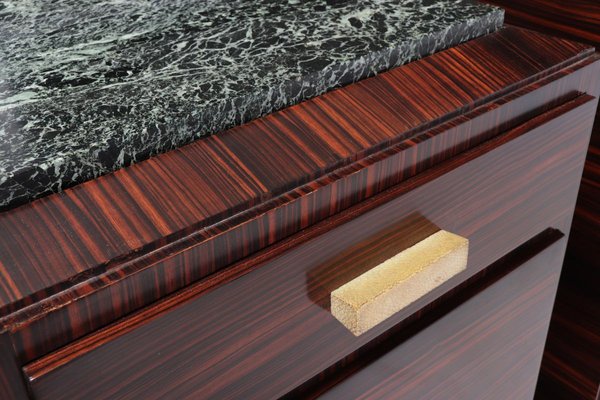
Where to buy Persimmon Timber
You may be fortunate, and your local lumber merchant could stock some Persimmon lumber, but don’t make the mistake of thinking it is a standard stock item.
Finding Persimmon stock, particularly boards, is not easy, and you will need to be very specific about the size and thickness of the timber you require. Also, be cautious about buying Persimmon lumber and ensure it has been properly kiln-dried to limit the amount of checking and warping.
Hamsley Hardwood is one of the Sawmills that specializes in offering a variety of hardwood species, including Persimmon. Located in Haynesville, GA, not far from Atlanta, they also stock cut rounds of timber from 1 to 3 inches thick and 6 to 18-inch diameter. Prices vary according to species and size.
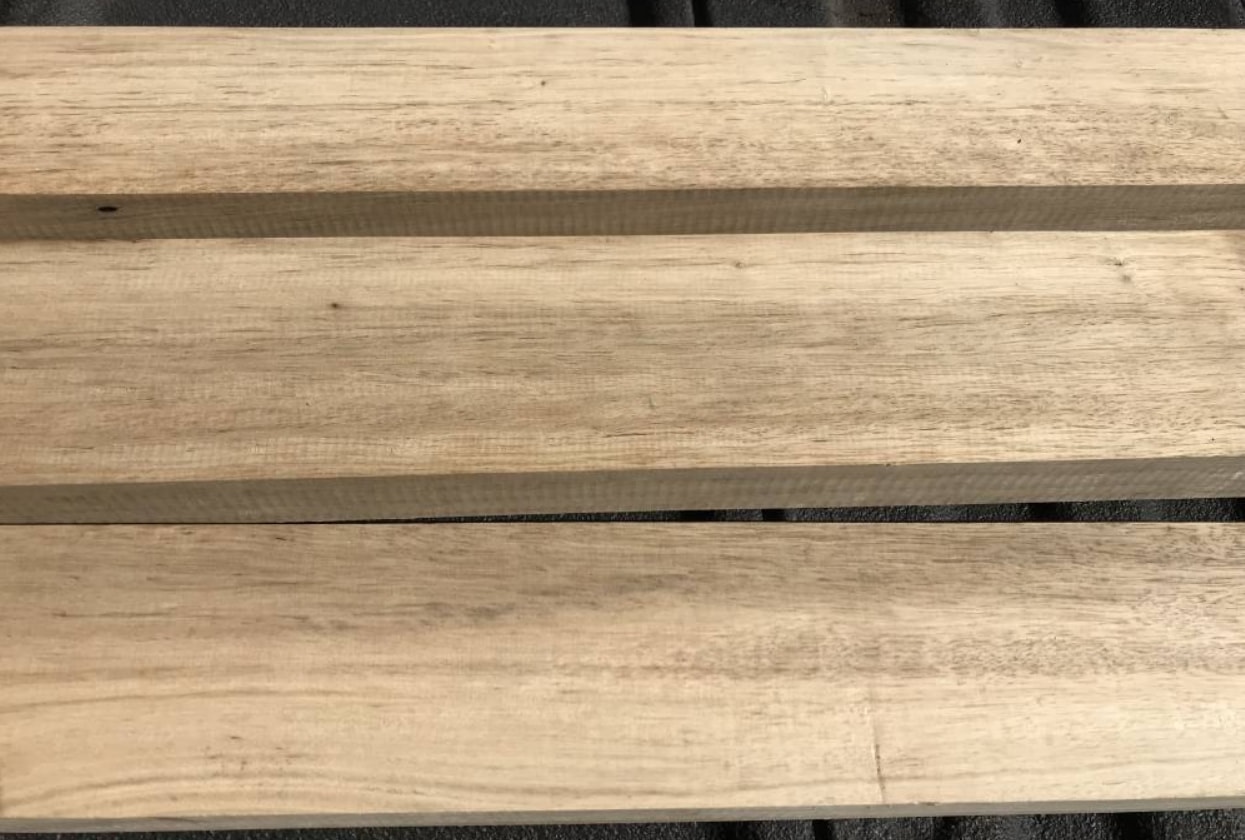
They also offer a kiln drying service using a dehumidifying kiln that can cope with the rigors of drying difficult timber species like Persimmon.
Advantage Lumber has a facility in Buffalo, New York, that can supply all destinations in the USA. They stock Persimmon lumber as well as blanks for turning. They offer two varieties of Persimmon, one with pronounced heartwood and the more conventional, ‘regular’ Persimmon.

WoodSlabs.com offer Persimmon slabs, and they have sophisticated kiln drying facilities that limit the amount of shrinkage and warping often experienced when drying Persimmon.
FAQs
Question: How does the Janka Hardness test work?
Answer: The Janka scale of hardness starts with Balsa wood (which is technically a hardwood) and has a value of 70 lbf, although there was one sample that achieved a record score of 22lbf. As the values rise, so does the hardness of the wood until we reach the super hard woods like lignum vitae with a rating of 4,390 lbf and finally, the Quebracho (aptly Spanish for axe breaker) species with a top value of 4,570 lbf.
As a middle-of-the-road value, White Oak achieves a value of 1,350 lbf.
The Janka value refers to the amount of force required to sink a steel ball with a diameter of 0,444 inches halfway into the wood when the moisture content of the wood is twelve percent. You may well wonder why such an odd measurement was selected, and I’m afraid the metric system is to blame for this.
The hole made by the 0,444-inch steel ball creates a circle with an area of 100 square millimeters.
Question: Are there any health risks to using Persimmon Lumber?
Answer: Care should be taken to minimize the inhaling of dust from any wood, and Persimmon timber is no exception. It may cause mild irritation when handling the timber, but it is generally considered non-hazardous.
Question: Is Persimmon Lumber suitable for Flooring?
Answer: The Janka rating of 2,300 lbf suggests that Persimmon would be ideal for Flooring as the hardness would make it durable and long-lasting. However, the availability of suitable-sized boards makes it a problematic wood species to source.
In addition, the tendency of Persimmon to shrink and swell depending on the ambient moisture content causes severe problems with Flooring unless the pieces are arranged in such a way as to allow for significant movement.
Conclusion
The cultivation of Persimmon Trees stretches back centuries in China and Japan, and it has been the fruit of the trees that is seen as the principal attraction of the species.
The wood, however, is highly prized, particularly by Japanese woodcarvers, because of the quality of the finish that can be produced owing to the hardness of the wood.
I can appreciate the beauty of finely carved pieces and the skill involved in producing delicate and intricate details. Still, Persimmon wood has a definite ‘seriously skilled’ tag regarding carving.
I’ve turned some bowls and made matching spoons using Persimmon, which is a delight in the lathe. As long as the chisels are sharp and you take things slowly, the density of the wood is constant and predictable. My spoons were simple and, I must admit, designed to be made using power tools, but the true beauty of the wood is the superb finish.
It is possible to source Persimmon live edge boards from a few suppliers, but there must be a compelling reason to choose this wood because of the tendency to crack and shrink. Personally, I would be reluctant to use Persimmon for conventional furniture because of the shrinkage and swelling problem resulting from a change in the ambient humidity.
I did turn two sets of drumsticks for a friend, and he swears they are far better than any he has purchased. He says it is because of the wood, but I want to believe it was the turner’s skill.
Persimmon is a wood that anyone keen to test their skill in turning or carving should try. However, it does raise the bar a little.

